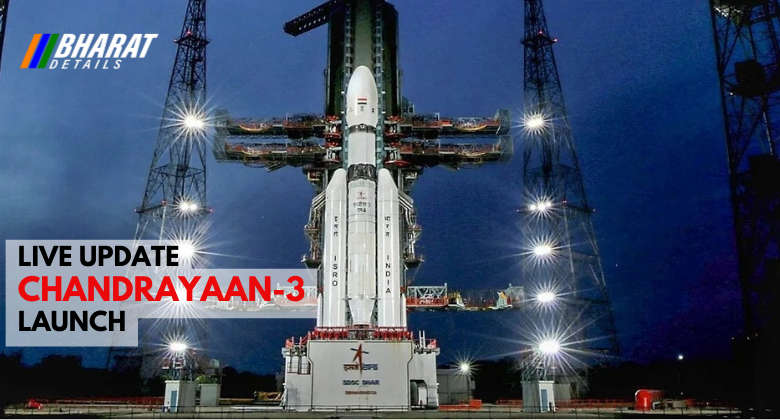ISRO’s Chandrayaan-3 Launches: Watch Live as India’s Third Moon Mission Begins

- India's Chandrayaan-3 Mission Aims for Soft Landing on Moon's South Pole
India’s third lunar mission, Chandrayaan-3, is scheduled to launch on July 14, 2023. If all goes well, the spacecraft will land on the moon’s south pole, a region that has never been explored by humans or robots.
The LVM-3 rocket, which is capable of carrying a payload of up to 4,000 kilograms, will propel Chandrayaan-3 into orbit around the moon. The spacecraft will then use its own engines to descend to the surface.
The Chandrayaan-3 mission is equipped with a variety of scientific instruments, including a camera, a spectrometer, and a radar altimeter. These instruments will be used to study the moon’s surface and atmosphere, as well as its history and geology.
The success of Chandrayaan-3 would be a major milestone for India’s space program. It would also be a significant achievement for the international scientific community, as it would provide new insights into the moon’s evolution and potential for life.
Contents
Chandrayaan-3 Launch Live Updates:
India’s third lunar mission, Chandrayaan-3, is scheduled to launch on Friday, July 14, 2023. The spacecraft will attempt to land on the moon’s south pole, a region that has never been explored by humans or robots.
If Chandrayaan-3 is successful, it will make India the fourth country to land a spacecraft on the moon, after the United States, Russia, and China. The mission will also deploy a rover to explore the lunar surface.
Chandrayaan-3 is a significant milestone for India’s space program. It demonstrates the country’s growing capabilities in space exploration and technology. The mission is also expected to yield valuable scientific insights into the moon’s history and geology.
Why Chandrayaan-3?
Chandrayaan-3’s Journey to the Moon
India’s Chandrayaan-3 mission will launch on July 14, 2023. The spacecraft will first enter a low Earth orbit of 179 kilometers. It will then gradually increase its orbit in a series of maneuvers to escape Earth’s gravity and slingshot towards the moon.
After reaching the moon, the spacecraft will need to be captured by its gravity. Once that happens, the lander, which carries the rover inside it, will separate from the propulsion module and start its powered descent. The lander will then touch down on the moon’s surface, hopefully on August 23 or 24.
The Chandrayaan-3 mission is a significant milestone for India’s space program. It will be the country’s fourth lunar mission, and it will attempt to land a spacecraft on the moon’s south pole, a region that has never been explored before.
The success of Chandrayaan-3 would be a major achievement for India and the international scientific community. It would provide new insights into the moon’s history and geology, and it would help us to better understand the origins of our own planet.
When is the landing expected?
Chandrayaan-3’s Timeline
India’s Chandrayaan-3 mission is scheduled to launch on July 14, 2023. The spacecraft will then embark on a journey to the moon, which is expected to take about 42 days. The landing is slated for August 23, 2023, at lunar dawn.
The first 25 days of the mission will be spent in low Earth orbit. During this time, the spacecraft will be making a series of maneuvers to increase its speed and altitude. On the 26th day, the spacecraft will enter lunar orbit. It will then spend the next few days adjusting its orbit and preparing for the landing.
The landing is scheduled for August 23, 2023, at lunar dawn. This is the time of day when the sun first rises on the moon. The landing will be a challenging feat, as the moon’s south pole is a region that has never been explored before.

